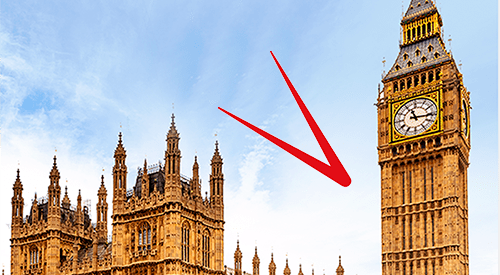Public procurement spend has risen by 22% in real terms in the last five years to £393bn. This equates to one third of the all the money government spends each year or 15% of GDP. We’ve also noted the significant increase in the use of procurement frameworks for large contracts, rising from 43% in 2018-19 to 72% in 2021-22.
At the NAO, it’s our role to make sure government gets value for money from its spend. So, we have published the findings from our detailed review of government’s use of frameworks in a report called Efficiency in government procurement of common goods and services. Our findings relate to the estimated £125bn annual public sector spend on common goods and services, such as energy. We identify £500m of potential savings in costs over five years to 2028-29, the new government could achieve, and six ways for them to increase efficiency in the buying process:
1. More bulk-buying and aggregation by government
Spend via the Crown Commercial Service (CCS) – which was formed by government in 2014 to help it drive better value from its procurement – doubled from £12bn to £25bn between 2017-18 and 2022-23; yet this is only a fifth of the estimated £125bn public sector market for common goods and services.
Almost 20,000 public sector organisations, including 18 central government departments, use CCS to buy common goods and services. As a result, CCS reported commercial benefits from frameworks of £3.6bn, around 10% of the spend.
But procurement decisions are largely decentralised. This limits widespread take-up of CCS’s initiatives to take best advantage of the government's collective buying power, and risks achieving the savings a centralised approach can bring.
2. Attract more suppliers and increase competition for contracts
More than 10,000 suppliers are listed on CCS frameworks, but not all win business. The number of suppliers reporting spend through a CCS framework has grown from 2,039 in 2017-18 to 3,926 in 2022-23. On average, each supplier sold £6m of goods or services via CCS framework agreements and no single supplier had more than 7% of the spend. Our analysis of 308 lots within 107 CCS frameworks, and with recorded spend above £100,000, found pockets of highly concentrated markets. In 2022-23, CCS frameworks had 24 single-supplier lots and a further 25 lots where all contracts were awarded to the same supplier even though others were available.
Given that the Cabinet Office’s impact assessment for the 2023 Procurement Act contained illustrative analysis to show that increasing the number of bidders in procurement could generate reductions in cost of 2% to 3.8%, anything that government can do to maximise competition is beneficial to the taxpayer.
3. Reduce commissions charged by framework operators
Framework operators like CCS have benefited from the increased spending via frameworks and are generating surpluses because their levy and commission rates are too high. CCS generated levy income of £177m in 2022-23, nearly twice its operating cost of £94m and double the 5% return on capital employed ‘hurdle rate’ set by HM Treasury.
The average levy rate across CCS frameworks is 0.7%. Other operators collect commissions of up to 6% via suppliers. But these charges are generally not transparent in the amounts paid by public sector buyers to suppliers.
More than £500m in savings could be realised by users of CCS frameworks over a five-year period if its levy was halved and these savings were passed onto buyers. Downward pressure on commissions would represent a saving for public sector buyers.
4. Accreditation of framework providers
Any public body can create a procurement framework, but the number in existence is unclear, with estimates ranging from 8,000 to 21,000 frameworks.
This fragmentation increases bidding costs for suppliers who have to duplicate efforts and compete across many frameworks. Barriers to entry for small businesses are created, because they simply cannot afford to compete across multiple frameworks.
The emergence of frameworks hosted by small contracting authorities and operated by private sector agencies raises questions about how these contribute to value for money at a system level. The government plans to monitor the number of frameworks when the Procurement Act goes live in October 2024. However, the Procurement Act does not contain any new legal powers to regulate framework operators.
An accreditation scheme within the scope of legislation and procurement policy would provide an opportunity to professionalise the central purchasing system and provide guidance to purchasers.
5. Greater rivalry between framework providers to enhance value
CCS is twice as large as the next 19 biggest framework providers combined and the 20 largest providers operate over 1,000 frameworks. CCS does not view other central purchasers solely as competitors, but as partners and allies.
When determining its addressable spend, CCS would sometimes identify central purchasers with whom to partner to host framework agreements and some of these arrangements may be based on levy share partnerships.
Combined with lower levies, greater rivalry between framework providers could increase the benefits of competition throughout this part of the procurement system.
6. Better data and greater transparency in public procurement
The current poor quality of much of government’s published data on contracts reduces transparency and makes it harder to identify and promote best practice.
The Cabinet Office is introducing a central digital platform under the Procurement Act. There will be a new register of ‘commercial tools’ which can help public sector organisations make decisions about how to go to market and provide more information about frameworks.
As the NAO’s analysis of CCS data shows, greater transparency surrounding the number of frameworks, commission rates, and how well competition is working within frameworks will make it possible to deliver greater efficiency throughout the public sector procurement landscape.
Join Any Questions
Be part of the live audience at this iconic BBC political debate when it is recorded at Chartered Accountants Hall this summer.



